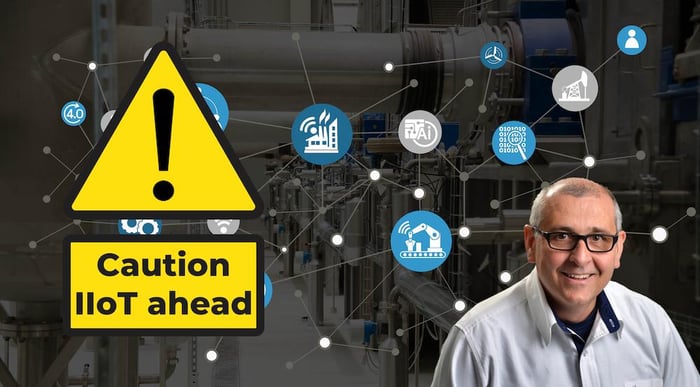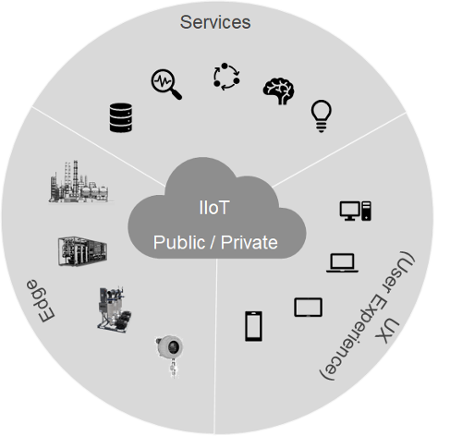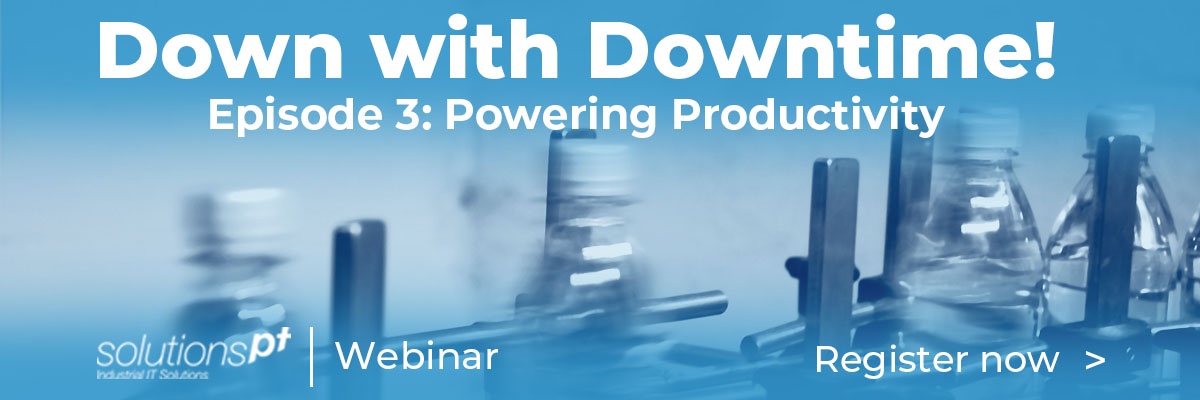In fact, your Industrial IOT solution has a good chance it will just waste your time.
I’m sure you’re bombarded every single day by companies trying to sell you the magic bullet that is IIoT technology. But beware the hype. If, like me, you’re a little tired of navigating the misinformation and you’re sick of hearing that IIoT solutions will magically improve your efficiency, then this post is for you.
So, what’s the real story of Industrial Internet of Things?

IoT, IIoT and the Impact on Operational Performance
Now, don’t get me wrong, I’m a self-confessed IIoT and industrial 4.0 geek, but it’s fair to say I’ve seen a few too many companies in manufacturing industry that make the same mistakes. They trial a greater reliance on IIoT just to find out the technology by itself is never the answer.
Industrial Internet of Things (IIOT) is one of the modern enablers but by itself, it can’t be the driving force to ensure your organisation achieves higher levels of productivity. It needs to be utilised as part of a broader digital transformation journey to a Smart Factory.
So, let's look at some of the characteristics of IIoT and the role it can play.
What is IoT?
General IoT is about connecting things, people and process. There’s nothing especially new about that and the idea has been driving the 4th Industrial Revolution for a while now. This process is more achievable than ever before, thanks to IoT, artificial intelligence and the low cost of sensors and connect devices.
By connecting to low-cost cloud services over low bandwidth, industrial companies can connect to a UI the user already has. This allows them to automate previously time-consuming tasks and better allocate resources to drive growth.
How IIoT Is Different
That extra I stands for ‘Industrial’. So how does it differ from regular IoT?
In the industrial automation space, we’ve always focused on connecting things (machines), processes (manufacturing, batch, utilities) and people (operators, managers). This isn’t new. PLCs, DCSs, RTUs, SCADAs, HMIs and Historians have been key parts of our world for ages.
But this has been a costly thing to do. Therefore typically, we find in a lot of companies that only the minimum amount of sensor work is done to achieve control. Sensor data is kept under lock and key as it’s expensive and dangerous to bridge the IT/OT divide.
This is where that all-important first ‘I’ of IIoT steps in.
Data that's already collected from assets (PLC/DCS/RTU/SCADA/HMI) can now be made available without costly integration to the entire Enterprise.
Plus, data that’s trapped because of the prohibitive cost of sensor work can now be unlocked. This is possible thanks to the low-cost sensors that can augment existing sensors/instruments without the need for costly wired networks.
IIoT enables you to get your hands on data that was previously thought impossible to collect, opening the door to better data analytics and in turn predictive maintenance.
Think remote monitoring of assets which aren’t inside your current network perimeter or WAN. All of this leads to greater connectivity and empowering of your teams.
For example, low-cost cloud or on-premises apps can completely change the lives of people by making them truly connected workers. Importantly, all of this can be achieved securely so any risk to an organisation is minimised.

IIoT as Part of a Wider Strategy
We’ve created a blog post that delves into the key benefits of IIoT which you can browse here. For a quick answer, Industrial IoT allows you to:
- Deliver value much more quickly than alternative methods.
- Easily adapt to changing environments so you’re always ahead of the curve.
- Systems can be implemented at a lower cost than when using traditional ways.
None of this is possible with a traditional approach but a word of warning: IIoT MUST be a part of a wider digital transformation strategy that focuses on business value. Your aims should be to:
- Reduce unscheduled downtime that inevitably leads to production losses.
- Increase production throughput.
- Improve quality control.
Keep all these goals at the forefront of your decision-making and you’ll find you’re always heading in the right direction. You might be reading this blog right now because you’re carrying out extensive research into IIoT in the hope of improving operational performance.
This is a good first step but at some point, you’re going to need to dip your toes in the water to see the benefits first-hand.
Down with Downtime!
In our upcoming webinar, we explore the tools that enable you to achieve a more efficient workforce, with relevant data and knowledge of procedures at their fingertips, in any location. By using AVEVA solutions, you can empower staff to make faster and better decisions, powering productivity on production lines all over the world. Register for the webinar now by clicking the link below.
However, if you do want to waste any more time on downtime and would like to see it in action, simply sign up for a free 45-day trial.



